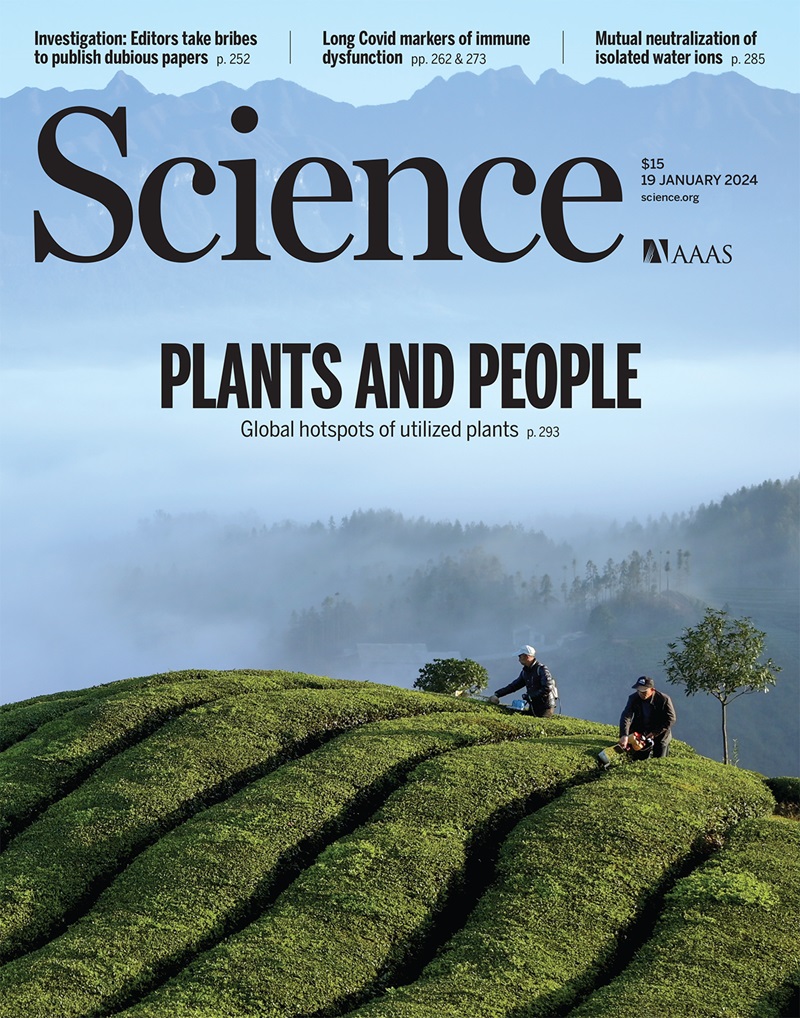Migrating shallow slow slip on the Nankai Trough megathrust captured by borehole observatories
IF 44.7
1区 综合性期刊
Q1 MULTIDISCIPLINARY SCIENCES
引用次数: 0
Abstract
Patterns of strain accumulation and release offshore in subduction zones are directly linked to the potential for shallow coseismic slip and tsunamigenesis, but these patterns remain elusive. In this work, we analyze formation pore pressure records from three offshore borehole observatories at the Nankai subduction zone, Honshu, Japan, to capture detailed slip-time histories of two slow slip events (SSEs) along the outermost reaches of the plate boundary. Slip initiates ~30 kilometers landward of the trench; migrates seaward at 1 to 2 kilometers per day to within a few kilometers of, and possibly breaching, the trench; and coincides with the onset and migration of tremor and/or very-low-frequency earthquakes. The SSE source region lies in a zone of high pore fluid pressure and low stress, which provides clear observational evidence linking these factors to shallow slow earthquakes.钻孔观测捕捉到的南开海槽大型逆冲构造的迁移浅层慢滑
近海俯冲带的应变积累和释放模式与浅层同震滑动和海啸形成的可能性直接相关,但这些模式仍然难以捉摸。在这项工作中,我们分析了日本本州南开俯冲带三个海上钻孔观测站的地层孔隙压力记录,以捕获沿板块边界最外缘的两次慢滑事件(ses)的详细滑动时间历史。在海沟向陆地方向约30公里处开始滑动;每天以1至2公里的速度向海迁移,到达距离海沟几公里的地方,可能会突破海沟;并且与震颤和/或极低频地震的发生和迁移相吻合。SSE震源区处于高孔隙流体压力和低应力带,为这些因素与浅层慢震联系提供了明确的观测证据。
本文章由计算机程序翻译,如有差异,请以英文原文为准。
求助全文
约1分钟内获得全文
求助全文
来源期刊

Science
综合性期刊-综合性期刊
CiteScore
61.10
自引率
0.90%
发文量
0
审稿时长
2.1 months
期刊介绍:
Science is a leading outlet for scientific news, commentary, and cutting-edge research. Through its print and online incarnations, Science reaches an estimated worldwide readership of more than one million. Science’s authorship is global too, and its articles consistently rank among the world's most cited research.
Science serves as a forum for discussion of important issues related to the advancement of science by publishing material on which a consensus has been reached as well as including the presentation of minority or conflicting points of view. Accordingly, all articles published in Science—including editorials, news and comment, and book reviews—are signed and reflect the individual views of the authors and not official points of view adopted by AAAS or the institutions with which the authors are affiliated.
Science seeks to publish those papers that are most influential in their fields or across fields and that will significantly advance scientific understanding. Selected papers should present novel and broadly important data, syntheses, or concepts. They should merit recognition by the wider scientific community and general public provided by publication in Science, beyond that provided by specialty journals. Science welcomes submissions from all fields of science and from any source. The editors are committed to the prompt evaluation and publication of submitted papers while upholding high standards that support reproducibility of published research. Science is published weekly; selected papers are published online ahead of print.
 求助内容:
求助内容: 应助结果提醒方式:
应助结果提醒方式:


